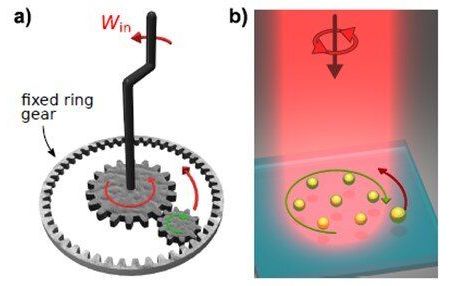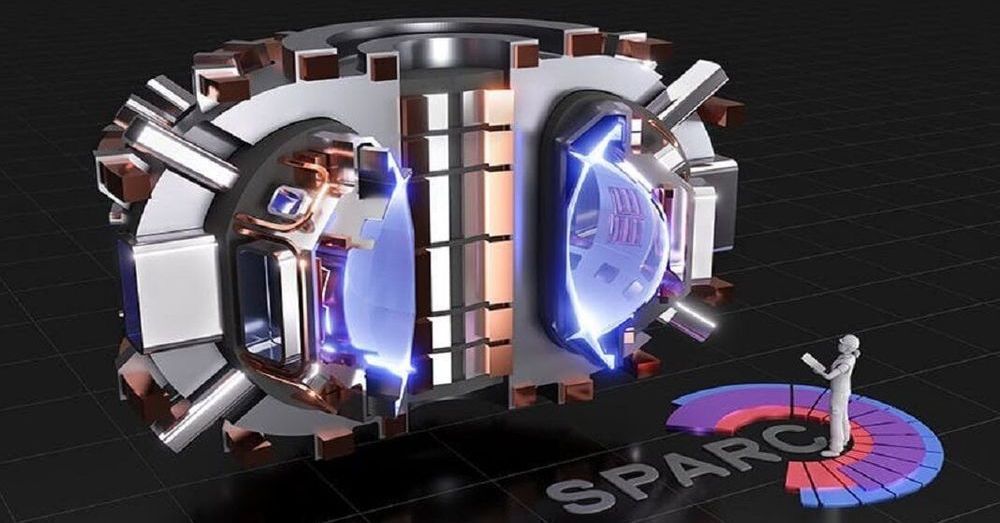Page 6028
Oct 9, 2020
For the First Time, Scientists Fully Sequenced the Human X Chromosome
Posted by Raphael Ramos in category: biotech/medical
Scientist have sequenced the x chromosome.
The sequencing of the human genome was one of the greatest scientific feats of the past century, but it’s a little-known fact that it’s still a work in progress with considerable gaps. New research suggests we could be just months away from finally finishing the job.
Nearly two decades after the Human Genome Project released the first map of our DNA, there are still large sections that are a mystery to us. Scientists have been slowly filling in the gaps, but certain portions that feature repetitive sequences going on for millions of base pairs have long been seen as intractable.
Continue reading “For the First Time, Scientists Fully Sequenced the Human X Chromosome” »
Oct 9, 2020
Nanoscale machines convert light into work
Posted by Raphael Ramos in categories: chemistry, nanotechnology, particle physics
“In previous work, the researchers discovered that when optical matter is exposed to circularly polarized light, it rotates as a rigid body in the direction opposite the polarization rotation. In other words, when the incident light rotates one way the optical matter array responds by spinning the other. This is a manifestation of “negative torque”. The researchers speculated that a machine could be developed based on this new phenomenon.
In the new work, the researchers created an optical matter machine that operates much like a mechanical machine based on interlocking gears. In such machines, when one gear is turned, a smaller interlocking gear will spin in the opposite direction. The optical matter machine uses circularly polarized light from a laser to create a nanoparticle array that acts like the larger gear by spinning in the optical field. This “optical matter gear” converts the circularly polarized light into orbital, or angular, momentum that influences a nearby probe particle to orbit the nanoparticle array (the gear) in the opposite direction.”
Researchers have developed a tiny new machine that converts laser light into work. These optically powered machines self-assemble and could be used for nanoscale manipulation of tiny cargo for applications such as nanofluidics and particle sorting.
Continue reading “Nanoscale machines convert light into work” »
Oct 9, 2020
Scientists Create ‘Super Enzyme’ That Eats Plastic Bottles Six Times Faster than Previous Enzymes
Posted by Raphael Ramos in category: food
After several other plastic eating enzymes have been discovered, a super enzyme further increases the speed at which it eats plastic.
Oct 9, 2020
NVIDIA Uses AI to Slash Bandwidth on Video Calls
Posted by Raphael Ramos in category: robotics/AI

What the researchers have achieved has remarkable results: by replacing the traditional h.264 video codec with a neural network, they have managed to reduce the required bandwidth for a video call by an order of magnitude. In one example, the required data rate fell from 97.28 KB/frame to a measly 0.1165 KB/frame — a reduction to 0.1% of required bandwidth.
NVIDIA Research has invented a way to use AI to dramatically reduce video call bandwidth while simultaneously improving quality.
Oct 9, 2020
New Reactor Design Could Produce First Ever Energy-Positive Fusion Reaction
Posted by Raphael Ramos in categories: energy, physics
Could this be the energy source of the future?
The secret to the SPARC reactor is that its magnets will be built from new high-temperature superconductors that require much less cooling and can produce far more powerful magnetic fields. That means the reactor can be ten times more compact than ITER while achieving similar performance.
As with any cutting-edge technology, converting principles into practice is no simple matter. But the analysis detailed in the papers suggests that the reactor will achieve its goal of producing more energy than it sucks up. So far, all fusion experiments have required more energy to heat the plasma and sustain it than has been generated by the reaction itself.
Continue reading “New Reactor Design Could Produce First Ever Energy-Positive Fusion Reaction” »
Oct 9, 2020
World Space Week: Six ways satellites improve our lives
Posted by Muhammad Furqan in category: satellites
The theme of this year’s World Space Week is satellites improve life. We are taking this opportunity to appreciate satellite technology and its incredible benefits.
What is 6G? Why do we need it? And why should we consider it before we even have 5G? We will answer these questions in this article with the insights from leading companies such as Samsung and Ericsson.
Oct 9, 2020
What Brain-Computer Interfaces Could Mean for the Future of Work
Posted by Nicholi Avery in categories: biotech/medical, computing, information science, neuroscience, wearables
Imagine if your manager could know whether you actually paid attention in your last Zoom meeting. Or, imagine if you could prepare your next presentation using only your thoughts. These scenarios might soon become a reality thanks to the development of brain-computer interfaces (BCIs).
To put it in the simplest terms, think of a BCI as a bridge between your brain and an external device. As of today, we mostly rely on electroencephalography (EEG) — a collection of methods for monitoring the electrical activity of the brain — to do this. But, that’s changing. By leveraging multiple sensors and complex algorithms, it’s now becoming possible to analyze brain signals and extract relevant brain patterns. Brain activity can then be recorded by a non-invasive device — no surgical intervention needed. In fact, the majority of existing and mainstream BCIs are non-invasive, such as wearable headbands and earbuds.
The development of BCI technology was initially focused on helping paralyzed people control assistive devices using their thoughts. But new use cases are being identified all the time. For example, BCIs can now be used as a neurofeedback training tool to improve cognitive performance. I expect to see a growing number of professionals leveraging BCI tools to improve their performance at work. For example, your BCI could detect that your attention level is too low compared with the importance of a given meeting or task and trigger an alert. It could also adapt the lighting of your office based on how stressed you are, or prevent you from using your company car if drowsiness is detected.
Oct 8, 2020
Why this space age airplane could change flying forever
Posted by Derick Lee in categories: energy, transportation
Airbus’s plan to bring to market a zero-emission passenger aircraft by 2035 means it needs to start plotting a course in terms of technology in 2025. In fact it needs to plot several courses.
It looks like something out of “Star Trek,” and runs on a fuel experts once thought “crazy,” but Airbus hopes that in 15 years we’ll be flying into a greener future aboard this new zero-emission aircraft concept.

















